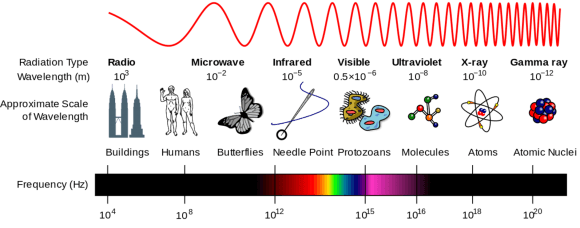Not so long ago, people like my Aunt Muriel thought of sunburn as a necessary evil on the way to a “good base tan.” She used to slather on the baby oil while using a large reflector to bake away. Aunt Muriel’s mantra when the inevitable burn and peel appeared: Beauty has its price.
Was she ever right about that price – but it was a lot higher than any of us at the time recognized. What sun addicts didn’t know then was that we were setting our skin up for damage to its structural proteins and DNA. Hello, wrinkles, liver spots and cancers. No matter where your complexion falls on the Fitzpatrick Skin Type scale, ultraviolet radiation (UV) from the sun or tanning beds will damage your skin.

UV light that affects our skin has a shorter wavelength than the parts of the electromagnetic spectrum we can see. Inductiveload, NASA, CC BY-SA

